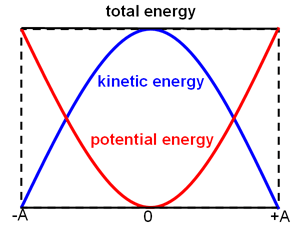Physics: Understanding Mechanical Energy
When the work is done upon the object, it gains energy. The energy acquired by the objects upon which work is done is known as mechanical energy. Mechanical energy is the energy that is possessed by an object due to its motion or due to its position relative to zero potential energy position. Mechanical energy is the sum of energy in a mechanical system. This energy includes both kinetic energy, the energy of motion, and potential energy, the stored energy of position. Mechanical energy exists as both kinetic and potential energy in a system. Kinetic energy, the energy of motion, exists whenever an object is in motion. Potential energy is based on the position of an object. It can not cause any change on its own, but it can be converted to other forms of energy. A moving car possesses kinetic energy due to its motion. A barbell lifted high above a weightlifter’s head possesses potential energy due to its vertical position above the ground.
Total Mechanical Energy = Potential Energy + Kinetic Energy
T.M.E. = P.E. + K.E.
Potential energy is the energy stored in a body or in a system due to its position in a force field or its configuration. Potential energy is calculated as the product of mass m of an object, height above ground h, and acceleration due to gravity g
P.E. = mgh
Kinetic energy is the energy of motion. An object that has motion, vertical or horizontal motion, has kinetic energy. It is calculated as half times the product of the mass of an object and square of the velocity it is moving with.
K.E. = 1/2 mv2
Therefore, Mechanical energy is given as:
T.M.E. = P.E. + K.E.
= mgh + 1/2mv2
An object that possesses mechanical energy is able to do work. In fact, mechanical energy is often defined as the ability to do work. Any object that possesses mechanical energy – whether it is in the form of potential energy or kinetic energy – is able to do work. That is, its mechanical energy enables that object to apply a force to another object in order to cause it to be displaced. The mechanical energy of a hammer gives the hammer its ability to apply a force to a nail in order to cause it to be displaced. Because the hammer has mechanical energy (in the form of kinetic energy), it is able to do work on the nail. Mechanical energy is the ability to do work.
Image source: https://www.physicsclassroom.com/class/energy/u5l1d6.gif
SchoolTutoring Academy is the premier educational services company for K-12 and college students. We offer tutoring programs for students in K-12, AP classes, and college. To learn more about how we help parents and students in Novato visit: Tutoring in Novato.


